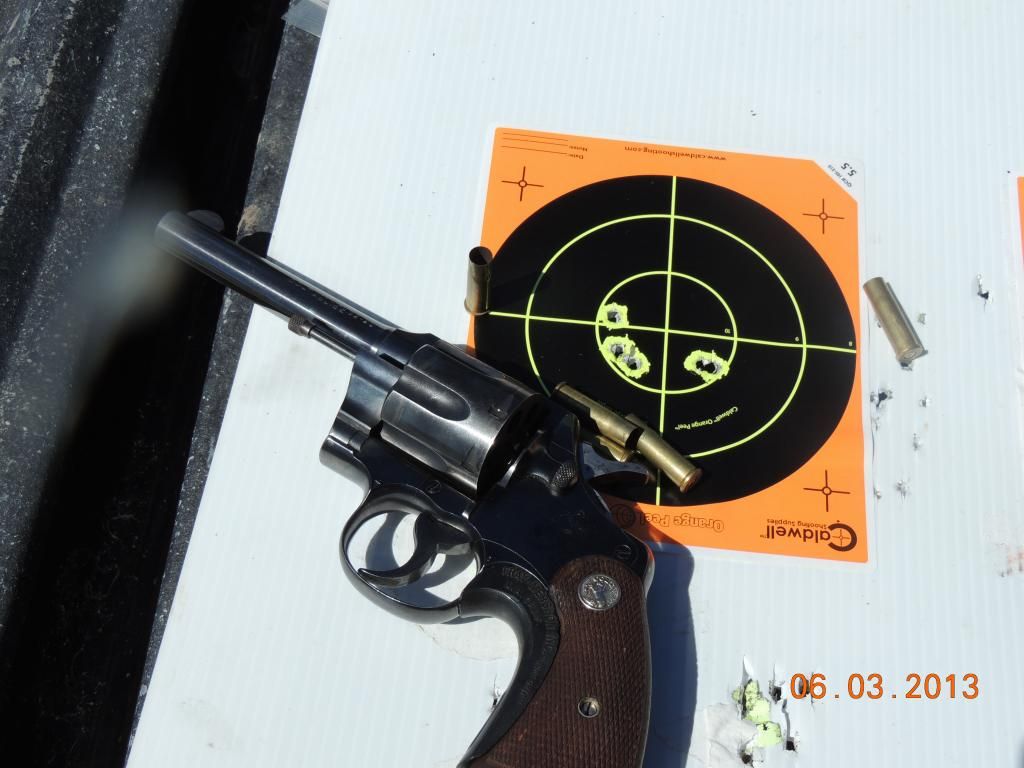James,
In that Colt design, you can tell when the hand is resting against & putting pressure on the rear of the cylinder quite easily.
Cock the hammer, check the cylinder for ANY detectible fore & aft movement at all. There'll typically be at least some tiny movement.
Pull the trigger to let the hammer drop & hold the trigger fully to the rear, as far as it'll go.
With the trigger still held FULLY to the rear, repeat your check for ANY cylinder fore & aft movement.
If the hand is at factory tolerances (as long as it should be), you should not detect any cylinder fore & aft OR rotational play.
This is the much-referred-to "bank vault lockup".
Now, ease up slightly on the trigger, let it go forward about an eighth of an inch, hold it there, check the cylinder for any fore & aft play.
You should detect the same amount of cylinder movement, however slight, as you did with the hammer cocked, which will also be the same amount of play with both the hammer and trigger at rest.
Pull the trigger fully back again, hold it, check for cylinder movement.
It'll be (if the gun's set up correctly & the hand's good) gone again.
Other designs will have SOME movement, fore & aft and rotational, regardless of trigger position, because their hands do not rest firmly against the ratchet under mechanically-leveraged pressure in any position, and those hands don't get hammered into shortening.
Primary cylinder in-battery lockup is done by the bolt, as in Smiths & Rugers.
The V-Spring has a secondary final moment-of-fire lockup provided by the hand (which the other two brands do not have), in direct contact with the rear of the cylinder, pushing it forward the last few thousandths into a no-play position when the trigger's pulled fully to drop the hammer.
Same in either DA or SA.
The cylinder, on firing, doesn't move much, but recoil back-pressure does jam it against the hand (in a way that does not occur in the Smiths or Rugers), and with repeated firing the hand both wears by normal friction (which happens in the other two brands) and "compresses" or shortens over a period of time.
This is primarily what causes a shorter hand life in the V-Springs than in other designs. Friction wear adds to it.
Hands do wear out in other brands, but in those it's typically just friction wear with steel rubbing against steel, which invariably removes minute amounts of surface material every time friction occurs.
Not all rearward movement is stopped by the frame, not all rearward pressure is absorbed by the rebound lever.
Smiths do go out of time, Rugers rarely, Colts inevitably DEPENDING ON EXTENDED USE & AMMUNITION TYPE.
You MAY shoot light .38s periodically for 50 years & run into no problems, particularly if tolerance stacking worked in your favor from the factory.
You MAY fire 10,000 rounds of hot magnums & need at least one hand replaced or stretched, particularly if tolerance stacking did not favor you.
Given equal volume of use with the same full-bore .357 Mag load, the V-Spring .357 will need attention long before a Smith L-Frame or a Ruger GP.
Exactly how long before, I doubt anybody can say & I certainly won't try.

People keep asking for round counts they can expect to get out of a given V-Spring before it'll develop timing issues, and there is no exact answer.
Denis

